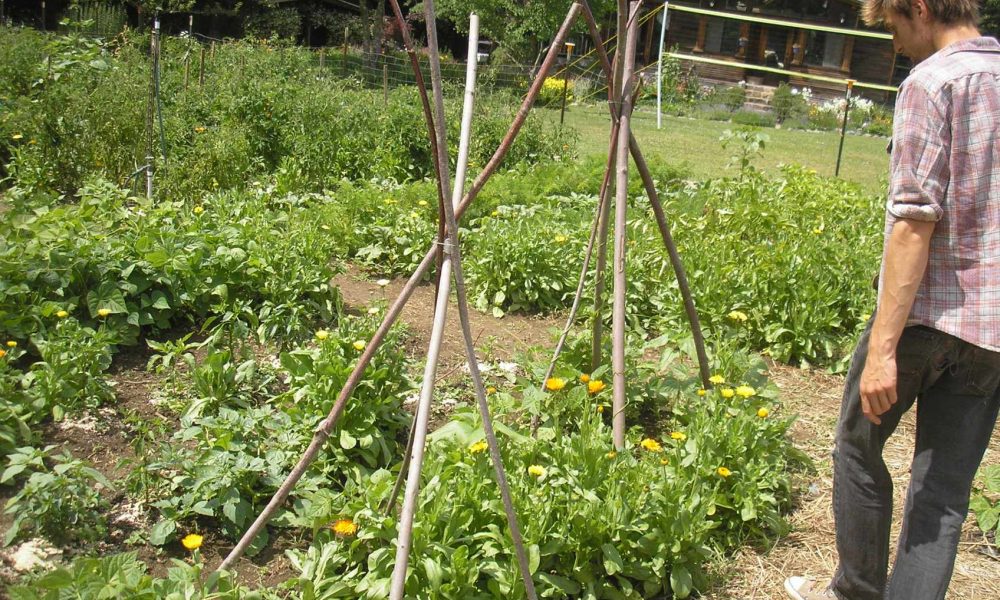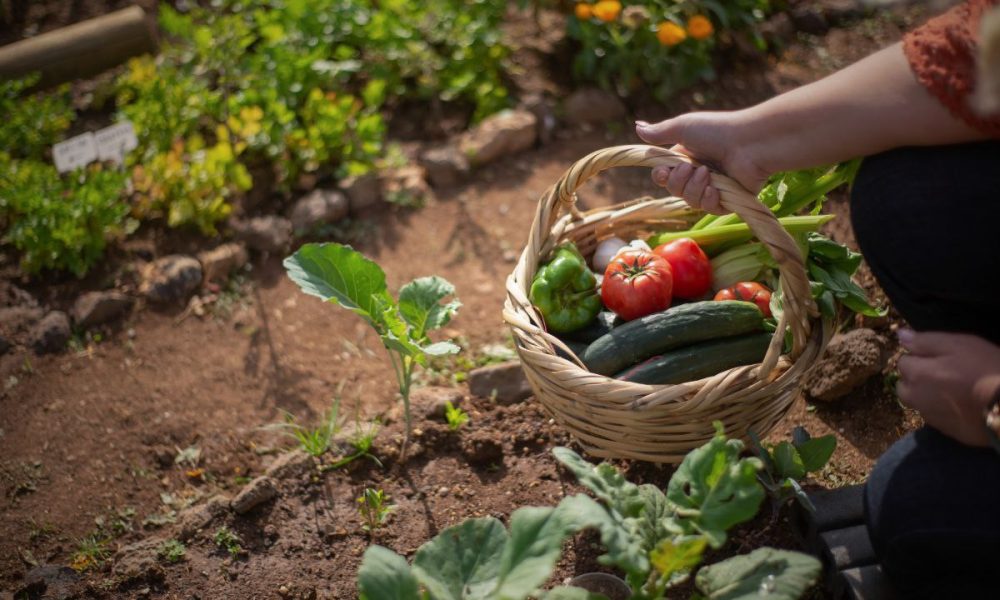Starting Gardens From Scratch – Soil
Autumn is here, and this is the ideal time to be preparing ground for your future garden beds. Here I will offer some elements I have learned and used over the years, and discuss their difficulties and merits. As a way of weaving the story together, I will describe three different gardens I helped start. There are physical material aspects, design considerations, and the realistic capacity of the players involved.
In 2009, some friends in Providence, Rhode Island were ruminating on the dire fact that nearly all food eaten in modern cities relies on massive supply chains thousands of miles long. In the face of this, they began growing food in a few neglected lots in the neighborhoods we roam. Some were guerrilla gardens, planted without any permission beyond the local will; others had some acknowledgment from a landlord, and another vacant lot was officially rented, becoming the Fertile Underground Communal Garden.
The space had formerly been a sort of parking lot behind an auto shop, so the soil was thoroughly steeped with oil, old shop rags, spark plugs and all sortsa junk. It had been cleared of heavy material and was basically flat, a square green spot within a low-income section of Providence. The team rallied all pickup trucks possible, and salvaged a bunch of old railroad ties that had been sitting for years. These things were massive, probably 10x10s about 12 feet long apiece. These were butted up to form squares in the garden, and plastic sheeting was lain on the ground, to prevent our food from tapping the toxic soil below. Compost and soil was brought in to fill the beds, and the season began.
Reviewing this technique, I point out that the capacity of excitable teamwork was essential, and the work happened without major strain on anyone. The knowledge of latent resources in the area, like the railroad ties, made this process an instant success. Its greatest positive is the immediate nature of establishing a garden in a solid day of group effort. Afterward, we realized that these old railroad ties were soaked in creosote or some other tar, to prevent decay, but is also toxic and likely made our food less-than-organic. In this case, a group of about 30 folks kicked in, and so buying soil to bring in was possible. I believe there were 5 beds made, about 10 inches deep, perhaps 500 square feet of garden made in short time.
That garden grew well. Composting began that year and was used to amend throughout the next seasons. At one point we got a bulk dump of unsifted compost through a city gardeners group-buy. We built our own simple sifter (hardware cloth in a basic wooden frame that we could toss shovelfulls at) and got the shells and leaf debris out of a bunch of yards of that compost. Work was shared and food was harvested as one would. The folks who were there a lot naturally harvested more. It wasn’t a major concern about folks taking more than they put in, there was plenty to go around. I built a greenhouse on site, there is another story. We planted there for two more seasons until 2011. Suffice to say that this technique worked great. It requires having a decent supply of people to help out, and to kick in some cash as well.
The same year, one of our pals was buying a house in the city that had a decent size front lawn, about the same total footage as our old plot. We planned to garden it anyway, but then as it happened our whole operation moved down there.
I borrowed a walk behind roto-tiller from our friends the New Urban Farmers, and went ahead and turned up the whole lawn. If one is aiming to break sod with a roto-tiller, begin with the depth set to a bit more shallow than halfway, the aim is to beat up the top grass layer. In my experience, you will need to do two passes over grasses no matter what, so don’t hurt yourself. You won’t get under it too much, but get the setting to where you are thoroughly beating its structure on the first pass. Then, when you drop it to about ¾ of it’s full depth, you should be able to do some proper tilling and open the ground up.
If one seeks the good farming literature you will likely encounter no-till farming, which is a super method, worth exploring. In my experience, this works well in soil which has already been in use, but when approaching a thick layer of grass, drop the plow, sweetheart. The basic lawn grass is not harboring the rich microbiotic landscape which a regular garden has. The drawbacks of disturbing your soil layers are highly outweighed by the benefit of looser soil to plant in. As you do the tilling, it can be helpful to have others just getting the grass clumps out of there. Shake the soil off and haul it away.
In this garden, a few families of immigrants from Bhutan saw the opportunity of good ground, and essentially took on about 80% of the responsibility of planting and everything. This was a welcome change in our crew. Although we couldn’t always speak, because of language barriers, it was always easy to garden together. That garden, planted in 2012, is still growing today, and has developed in maximizing space, introducing vertical gardening, and many sculptures.
In that garden, the tiller made it possible for an afternoon to yield arable ground. I seem to remember amending the rows as we planted them. The house has had chickens for many years now, and this has provided a lot of opportunity to continue feeding that ground. To be honest, our Bhutanese friends work their magic there and I have been less involved lately, as I farm other plots now. Again, the needs of this plan are tilling, and having a community who are willing to help, often. This garden is tended every day during the growing season. Much of its success may have been not from incredible soil, but from very diligent weeding.
A few years after that I had the opportunity to turn some more lawn space into a garden at our home. A friend brought his tiller down and carved out a sort of triangle. We live among tall oaks, so this space gets direct sun only about half the day, but it’s the best we got. I added some compost as we make and it was available, but held off from spending much money to add the inch or two the whole garden could have benefited from. I worked on a tree crew at that time, and began adding layers of wood chips for mulch.
During the first few years of gardening, I kept getting low results. Low germination. Getting busy and not watering enough. The soil felt sandy and lifeless. Usually one crop would do really well and most everything else didn’t. Potatoes always grow. I stick with what responds.
I kept adding the wood chips. I found later that this method is described in the movie “Back to Eden”, which I would recommend. I had come upon the same technique myself, and added some of his tips to what I was doing. Basically, get in touch with a tree company who may be willing to dump a pile of wood chips near your garden. I would seek out a conscientious crew who will take the care to bring you a load that’s not stacked up with sticks or logs or trash or anything foreign within, hopefully a good clean load that is mostly straight woody debris. If they are super conscientious they will even make sure it’s not from a tree that was removed due to disease. My hunch is that you would prefer a deciduous, not evergreen, variety, as those trees are known for being acidic to soil (and then would be ideal for placing underneath your berry orchard, again, another story).
Now, I began by saying that the ideal time to start your garden is in the fall. To be honest, both those first gardens were started in May. But to me, the best is the fall. Another method I have used in the past is called sheet mulching, or lasagna gardening. You can look it up, but there you are adding successive layers of material that will decay into your garden, bringing it fertility, structure, aeration, worms, microbial action, and beyond. You can use almost anything you have in abundance whether that’s cardboard, leaves, or back issues of the Beartaria Times print edition retrieved from the future. In this case I just used straight up wood chips. Because they were free. Because I chipped them myself. Whenever I noticed a load that was clean, from a healthy tree, free of debris, and we were in my neck of the woods, I would ask for a contribution, and get the dump right near the garden. Then I would peck away at the pile, one wheelbarrow at a time, over the course of a couple weeks, spreading a good few inches across the whole garden with a rock rake. You see why this would be possible in the fall, or late winter, when the garden isn’t full of plants.
At first, this technique doesn’t do much, except act as a good weed suppressor. You can move the chips aside and plant your stuff in the soil below. But then you start to see immense amounts of mycelium in there, and the soil below gets looser and darker. This technique is not fast, but it’s cheap/free, it’s simple, and once it’s rolling, it just works. Mulching in general is a great way to keep the garden orderly. Everything from making pathways clear to see, and keeping the weeds held back, just a bit.
Now this year, I finally went and bought a bunch of compost from my favorite local biodynamic composters, who use a lot of fish detritus, food scraps and tree elements on a massive scale. I gotta say, the results were immediate, impressive, and very worth the money. I would have done this sooner, looking back. Yet I was surprised by how unwilling this ground was, when I began working with it. My insight is that the type of fertilizers and chemicals the previous folks may have used on this lawn completely zapped this soil of it’s microbial life and structure. There weren’t even many worms. If you get any inkling of this, I would be prepared to add compost, and not just the little bit you make yourself, but a good bunch of bags or a truckload from an awesome composter. Get on the woodchip train, but give that technique three years to really start giving back.
Growing a basic family garden, especially if you have need to be away from it for work or other stuff, it’s valuable to know the ways to support the plants, make them as resilient as they need to be, to deal with our own shortcomings as their caretakers. I had a few years lately where I made most of the right efforts, yet did not see the huge bounty, mainly because of low soil quality. I could have ponied up some cash and had a lot more success. If you find compost that is rich in bacteria, it’s going to inoculate the whole garden, and help everything along. Watch for the little signs and trust your intuition.
One final tip that’s not for everyone, it to be mindful of weeds. Nature does not leave bare ground, that’s why we get the mulch in there to tuck it in. Plants will come up when you make space, and not all of them will be your chosen varieties. Yet don’t be so quick to pull everything out. Make room for your plants, plenty of it, but wherever possible, leave those weeds. Often I find that those are the plants that bugs are choosing to eat. They may harbor beneficial insects. They may be balancing the soil in some way. You will get to know which of the weeds are your preferred varieties, and make your own selections of them as well. The garden is a domain with its own language, and as a good leader, it’s best to govern with an easy hand.
Here is only a basic review of a few methods of getting a garden going. Consider what unique assets you have in the process, whether it’s an abundant resource, big family and friends, or plenty of time on your hands. You may find that it’s more productive to baby four cucumber plants than go plant 14 mounds. You may find that just turning over an area in the ground and scattering some seeds willy-nilly (like I do, with some choice involved) performs just as well as laying everything out. Mainly, you’ve got to have a garden that calls you in and keeps you engaged and active. It’s a marathon, and there are key moments in any plants life where if you fail, it will suffer bad. The more repetitive attention, even just ten minute stroll and observe, helps everything continue in a good way.
It’s a blast getting soiled in the garden and I am quite happy to write for this audience. I would happily receive suggestions for gardening topics to pursue in the future. It’s a space that does not demand an expert, but appreciates expertise. Get those long handled tools in your hands and keep that ground growing!!
Written by,
-Michael G (requesting to be bearified as Moss Bear) imagined an approach called “World Gardening” wherein he accepts that this entire World is to be tended and cultivated. It’s not unusual to find him saving seeds from an overgrown meadow or abandoned garden, pruning a shrub after ringing your doorbell, or throwing acorns from the window of a moving automobile. Lately he is imagining a more coherent cooperative project along these lines, called Earth Weavers. One of the first major projects may be the reintroduction of beneficial seeds to the clearcut hillsides of Americas Northwest. To fund this endeavor he is offering a multitude of homestead skills. More information may be found at www.earthweavers.art , and Moss Bear may be reached at earthweavers@protonmail.com or @dspacio on the gram .




